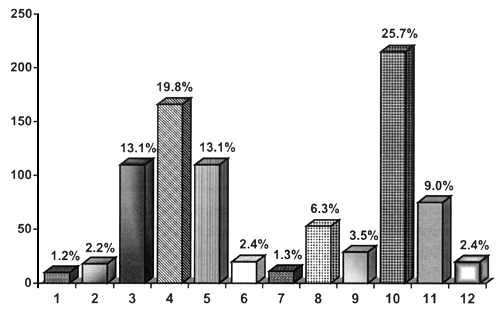The Thai AGRIS Centre receives 99 percent of its information in print and only 1 percent in electronic files. However, it has become evident that most users are interested in acquiring the full text documents of the information held in the bibliographic databases. Print materials are very difficult to locate in a decentralized system such as the AGRIS network and as such many managers are working toward offering their collection online.
Advancements in information technology have broken the barriers of geographical boundaries and disparity of information systems, enabling information services through the Internet without much of the previously experienced limitation. Access to full-text documents online is the ultimate need, beyond information discovery, of every user. Thus availability online has became a priority for every information manager.
Electronic full text documents services in the AGRIS network should be available as open-access repositories. However, this is not possible in many countries due to the copyright issue and due to the fact that many of the documents are not in electronic format or online.
One most efficient way to collect the full text documents is by promoting self-archiving by the owners into the institutional repository or availing a digital copy of their work to the institutional library and information system outside. There is a strong movement - the Open Access Movement - that promotes this cause.
The Thai AGRIS Centre, with support from FAO and IDRC, has made full-text documents available to all bibliographic records in the database from 1980 using microfiche technology. This was the most appropriate technology at that time because of its low cost of production and the long shelf life. However, there are some limitations in the wider use of the microfiche technology because it requires specific tools for reading and a user has to physically go to the centre.
Results from a study on the use of online databases by graduate students in agriculture at Kasetsart University confirmed this point. Most students showed greater interest in the full-text databases. It was also noted that the greatest limitation of online bibliographic databases was the accessibility of the full-text documents. The study also indicated that the most popular database with full-text documents was ScienceDirect, which is an electronic journal database - though the content was not of great interest as an agricultural subject to the students.
AGRIS was the most popular database among the bibliographic databases with no full-text documents.
Figure 6: Kasetsart agriculture students and the online databases they use

Source: Krisna Bennukul. 2003. Behaviour in using online databases for agricultural information searching by graduate students in agricultural science, Kasetsart University
Production of digital documents by scanning
Studies indicate that archivists face several challenges in archiving digital information. One of the greatest is technological obsolescence, which is the result of the evolution of technology: As newer technologies appear, older ones cease to be used. Currently new devices, processes and software are replacing the products and methods used to record, store, and retrieve digital information at breathtakingly short cycles of two to five years. Consequently, information that relies on obsolete technology becomes inaccessible.
Preserving digital information also focuses on the longevity of the physical media on which the information is stored. Even under the best storage conditions, however, digital media can be fragile and have limited shelf life.
At present, scanning technology is the best option for digitizing print documents at the Thai AGRIS Centre due to its low cost of production, more efficient capacities and cheap tools of storage. It also is widely applied even though the microfiche technology is more stable. As previously mentioned, the centre therefore has made available electronic full-text documents by scanning all print documents since 2001 and from transferring microfiche to electronic files from 2000 back to 1980.
Table 3: Numbers of digital documents scanned by the Thai AGRIS Centre (as of July 2004)
| Type of documents | Scanned document | ||
|---|---|---|---|
| Hard copies (pages) | Microfiche (pages) | Total (pages) | |
| Agricultural documents | 122,432 | 106,517 | 228,949 |
| Technical documents from annual conferences | 65,392 | – | 65,392 |
| Technical documents from Kasetsart university expertise | 103,859 | 18,269 | 122,128 |
| Total | 291,683 | 124,786 | 416,469 |
Problems related to document scanning
The main problem resulting from the scanned documents is clarity and length of time. A great deal of time is spent on embellishing the image documents using a graphic application.
Time spent in production of digital documents by scanning
Scanning can be a somewhat time-consuming process due to its several steps: document scanning, image enhancing, image quality control and file management. The time spent depends on the quality of the documents, efficiency of the equipment and human resources available.
Figure 7: Proportion of time used for producing e-documents

Image-enhancement tools
The functions of image-enhancement tools are: deskew (the process that will remove skew from the image), auto crop (to eliminate vertical and horizontal marginal noise), auto align (to automatically align the text area into the paper centre) and noise removal. Using the figures presented in Table 4, it would take approximately six years to digitize all documents at the Thai AGRIS Centre, excluding the increasing number of new documents. Further development of efficient tools for Thai document image enhancement seems to be one way to solve the digitization-related problems.
Table 4: Time saved by image cleaning tools
| Function | Time spent without tools (min / page) | Time spent by using tools (min / page) | Time saved (min / page) |
|---|---|---|---|
| Auto align | 3.30 | 1.30 | 2 (60%) |
| Noise removal | 6.36 | 3.25 | 3.11 (48%) |